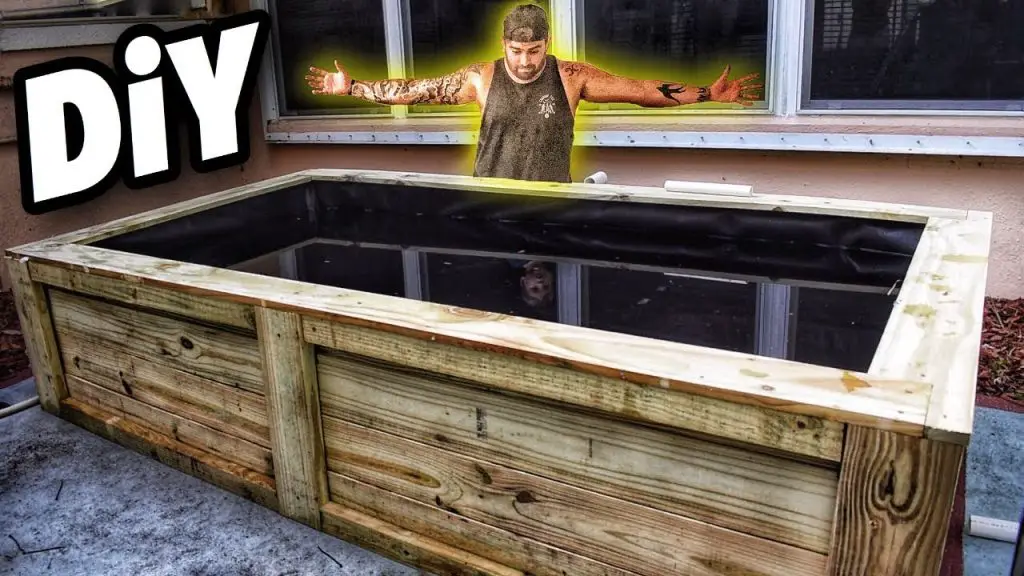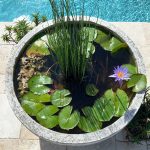How to Build an Above Ground Pond with Wood
If you’re looking to enhance your outdoor space and add a touch of tranquility to your backyard, building an above ground pond with wood can be a fantastic option. Not only does it provide a beautiful focal point, but it also creates a soothing atmosphere that can help you relax and unwind after a long day. In this guide, we’ll walk you through the step-by-step process of building your own above ground pond using wood, offering practical tips and expert advice to help you create a stunning water feature that complements your outdoor environment.
Choosing the Right Location for Your Pond
The first step in building an above ground pond is to carefully select the location where you want to place it. Consider factors such as sunlight exposure, proximity to trees, and the overall layout of your outdoor space. Ideally, you’ll want to choose a spot that receives a good amount of sunlight, as this will support the growth of aquatic plants and contribute to the overall health of your pond.
Additionally, take into account the existing landscaping and ensure that the pond’s placement complements the surrounding elements. Keep in mind that you’ll also need access to electricity for pumps and filtration systems, so choose a location that allows for convenient power supply.
Gathering Materials and Tools
Before you begin construction, it’s important to gather all the necessary materials and tools. Here’s a basic list of what you’ll need to get started:
Materials:
– Pressure-treated wood or cedar for the frame
– Pond liner
– Gravel
– Aquatic plants
– Water pump and filtration system
– Screws and nails
– Exterior wood sealant
Tools:
– Measuring tape
– Level
– Saw
– Drill
– Shovel
– Work gloves
– Safety goggles
Constructing the Frame
Once you’ve chosen the location and gathered your materials and tools, it’s time to start building the frame for your above ground pond. Begin by measuring and marking the area where you want the pond to be placed. Use a level to ensure that the ground is even and adjust as necessary.
Next, cut the pressure-treated wood or cedar to the desired lengths, based on the dimensions of your pond. Assemble the pieces to create a sturdy frame, securing them together with screws and nails. It’s important to ensure that the frame is level and square to guarantee a stable foundation for the pond.
Installing the Pond Liner
With the frame in place, it’s time to install the pond liner. Carefully lay the liner inside the frame, allowing for a generous overlap around the edges. Smooth out any wrinkles or folds to ensure a snug fit, and trim off any excess material as needed.
To hold the liner in place, use rocks or bricks along the edges of the frame. This will help prevent the liner from shifting and maintain the shape of the pond. Once the liner is secured, add a layer of gravel to the bottom of the pond to provide a natural substrate for aquatic plants and create a visually appealing look.
Adding Water and Aquatic Plants
After the liner is in place, it’s time to fill the pond with water. Use a garden hose to slowly add water, monitoring the level to ensure that it reaches the desired depth. As the pond fills, arrange your chosen aquatic plants along the edges, taking care to space them out evenly and create an aesthetically pleasing arrangement.
When selecting aquatic plants, consider a mix of floating, submerged, and marginal varieties to create a balanced ecosystem within the pond. Water lilies, lotus, and water lettuce are popular choices for above ground ponds, adding beauty and natural filtration to the water.
Installing a Water Pump and Filtration System
To maintain the water quality and ensure proper circulation, it’s important to install a water pump and filtration system. These components will help keep the water clean and oxygenated, creating a healthy environment for your pond plants and fish, if you choose to add them.
Select a submersible water pump that’s suitable for the size of your pond, and position it at the appropriate depth to maximize water circulation. Additionally, install a filtration system to remove debris and maintain water clarity. There are various options available, including mechanical and biological filters, so choose one that best suits your pond’s needs.
Applying Wood Sealant for Protection
To protect the wood frame from the elements and prolong its lifespan, it’s essential to apply a quality exterior wood sealant. Choose a product that’s designed for outdoor use and provides protection against moisture, UV rays, and mildew. Apply the sealant according to the manufacturer’s instructions, ensuring complete coverage of all exposed wood surfaces.
Regular maintenance, including reapplication of the sealant as needed, will help preserve the appearance and structural integrity of the wood frame, allowing your above ground pond to remain an attractive and functional feature in your outdoor space for years to come.
Final Touches and Maintenance Tips
Once your above ground pond is complete, take the time to add some final touches to enhance its visual appeal. Consider incorporating decorative elements such as rocks, driftwood, or ceramic ornaments to add interest and create a naturalistic ambiance around the pond.
In terms of maintenance, it’s important to regularly monitor the water quality, remove any debris or fallen leaves, and trim back overgrown aquatic plants as needed. Additionally, be mindful of seasonal changes and adjust your care routine accordingly to ensure the continued health and vitality of your above ground pond.
In Conclusion
Building an above ground pond with wood is a rewarding DIY project that can bring beauty and serenity to your outdoor living space. By carefully selecting the location, constructing a sturdy frame, and incorporating the right materials and features, you can create a stunning water feature that becomes a focal point in your backyard.
With proper planning and ongoing maintenance, your above ground pond can provide a peaceful retreat and a habitat for aquatic life, allowing you to enjoy the sights and sounds of nature right in your own backyard. Whether you’re a seasoned DIY enthusiast or a novice gardener, building an above ground pond with wood is an achievable and fulfilling endeavor that can transform your outdoor environment into a tranquil oasis.




